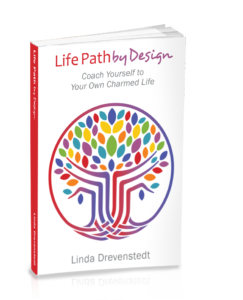
May 10, 2021 | Drevenstedt Consulting
Each of us has a 2-year-old tyrant that lurks deep inside.
Yes, you, me, and every person that you lead. This natural part of our inner world can rear its head and cause performance and leadership challenges. It comes up as you lead yourself and others. Since I am now a Yaya (grandma) to a 2-year-old, I get it as you ask them to do something they resist. If you give them choices that will work for you, they tend to co-operate.
As a leader, you can encounter resistance, flat-out noncompliance, and even sabotage behind your back. Here are steps to advance your leadership.
1st Accept that you feed your own two-year-old when you react with frustration (only natural), upset or other emotional response—picture two 2-year-olds solving a problem. Take a couple of deep breaths to become calm and adult again.
2nd Stop and approach the situation anew. Think about choices and co Operating WITH the staff member. If you have already made a demand, be willing to admit your poor communication about the request. Ask if you can have a “Do Over?” Now, ask for their input and point-of-view. Listen, be present, and do not be distracted by other demands. Together solve the challenge, discuss how to reach the goal, or get the job done to performance expectations.
3rd Ask for their ideas about how they can deliver your clear task/job expectation(s). To clarify the communication, take time to ask the staff member to tell you in their own words what the expectation is. Be sure you agree.
4th Specifically, agree who will do what by when. Be sure to include a most necessary check back time. This Check back allows you to Praise the result OR re engage in the conversation about the results and expectations. Discuss with the staff member: What is working? Then, What is Not working?
Now, each time you approach a staff member about their performance, you can pull up that image … “You Are Not the Boss of Me,” and know how to handle the situation.
Email me [email protected], and I will send you my Performance Coaching Worksheet to have as a model for the conversation.

Apr 10, 2020 | Inspiration For Your Life Path
 My calm place, as the world swirls around us in it’s own conversation, is my meditation practice. Each day I look to the calm inside beyond the appearance “out there.” The place where I connect to the Divine presence. Divine presence appears as Jesus at times, as Quan Yin, as Divine grace and sometimes no visual just the feeling of a warm cozy blanket around me.
My calm place, as the world swirls around us in it’s own conversation, is my meditation practice. Each day I look to the calm inside beyond the appearance “out there.” The place where I connect to the Divine presence. Divine presence appears as Jesus at times, as Quan Yin, as Divine grace and sometimes no visual just the feeling of a warm cozy blanket around me.
Today after listening to Elizabeth Gilbert’s post on the Insight Timer™ app (Elizabeth Gilbert Compassion), I found myself writing the letter she suggests from the divine loving presence to me. The letter poured out for pages as I let go of held-in tension I am not sure I even realized was there.
We go about our chosen spiritual path, and often forget our human part. We try to put on the happy face; the “I’m doing OK” face or the “I’ve got it together” face. We bury the real human feeling of being afraid, overwhelmed, and frustrated about things like no eggs or almond milk at the grocery store. But we are human and divine.
 Our human BEING is vulnerable to the “Out there” scare, fear and the “fake news” and the real news. I loved Elizabeth Gilbert’s message. We all, in our humanness, want the comfort of a warm loving ideal mother to put her arms around us and kiss the Boo-boo away. We may never have had that from our real mother or maybe we did. But, hey, we are toughened adults and whining to get comfort is frowned upon. We are all supposed to put on the brave face, especially if you have children at home.
Our human BEING is vulnerable to the “Out there” scare, fear and the “fake news” and the real news. I loved Elizabeth Gilbert’s message. We all, in our humanness, want the comfort of a warm loving ideal mother to put her arms around us and kiss the Boo-boo away. We may never have had that from our real mother or maybe we did. But, hey, we are toughened adults and whining to get comfort is frowned upon. We are all supposed to put on the brave face, especially if you have children at home.
As I wrote, more poured out. I got an image of a time when I learned to let go and trust. I was in the swimming pool at the YWCA from early childhood. You see, my Mom was afraid of the water and never learned to swim. She wanted me and my brother to never to be afraid of the water. She brought us to the Y for swim lessons at the earliest possible age. I loved it and went on to teach swimming as a teen. The float skill learning curve came to mind. Floating takes trust, letting go and finally faith.
In order to teach us to float, the instructor would be in the pool with me, hold my shoulders and asked me to move my feet up so I was like a log. I would move my feet up, then put them back down, afraid of sinking. She would patiently repeat the process. Then came the time I let it happen, I trusted the float that was there all the time waiting for me. Never looking back. Floating is one of the most calming things I do. Pool or ocean. Now, my son Paul is teaching my granddaughter, Nina age 3, to float.
 I grew to love the waves at Tybee Beach, in Savannah, GA where we spent summers as a child. I would float, a wave would come and take me for a ride. I would often cough and sputter if the wave was a bit much for me in that moment. Then I got braver and allowed the float in me to become body surfing. The wave might come and toss me to the sand below even scratching my knees as the surf tumbled me with force. But I knew deep inside I always had my float. Just relax and the surface will come back.
I grew to love the waves at Tybee Beach, in Savannah, GA where we spent summers as a child. I would float, a wave would come and take me for a ride. I would often cough and sputter if the wave was a bit much for me in that moment. Then I got braver and allowed the float in me to become body surfing. The wave might come and toss me to the sand below even scratching my knees as the surf tumbled me with force. But I knew deep inside I always had my float. Just relax and the surface will come back.
Whether you float is a choice. Here is my float meditation:
F – Free yourself of FEAR
L – Lean into faith as you know it, the Loving arms of your Divine presence.
O – Offer thanksgiving/gratitude. Observe life from the hawk’s eye view.
A – Accept guidance, a nudge, or help. Accept that you can help others
T – Take one step
Floating takes trust, letting go and finally faith. Your float is waiting for you.
Be well out there,
Coach Linda
 P.S. – Here’s my new e-book. It is fill-in-able for you. Free to you. During this “shelter in place time,” journaling can be a great comfort and new habit to start or continue. Just go to my website: www.lifepathbydesign.net to receive your free e-book.
P.S. – Here’s my new e-book. It is fill-in-able for you. Free to you. During this “shelter in place time,” journaling can be a great comfort and new habit to start or continue. Just go to my website: www.lifepathbydesign.net to receive your free e-book.
OR, if you’d like a page back copy with plenty of writing space, the book is available on Amazon.

Nov 4, 2019 | Inspiration For Your Life Path

In Part One, I discussed the fairy tale falsehood that what you do or say and don’t do or say is the ultimate cause of another’s happiness. You take on the unrealistic expectation that your job is to make others “happy.”
You are NOT responsible for another person’s happiness.
This is never truer than with your adult children. ALSO, the reverse…
Your adult children are NOT responsible for your happiness. Nor are they responsible for making you proud or for endorsing your beliefs and values.
On Children
Your children are not your children.
They are the sons and daughters of Life’s longing for itself.
They come through you but not from you,
And though they are with you, yet they belong not to you.
You may give them your love but not your thoughts,
For they have their own thoughts.
You may house their bodies but not their souls,
For their souls dwell in the house of tomorrow, which you cannot visit, not even in your dreams.
You may strive to be like them, but seek not to make them like you.
For life goes not backward nor tarries with yesterday.
You are the bows from which your children as living arrows are sent forth.
The archer sees the mark upon the path of the infinite, and He bends you with His might that His arrows may go swift and far.
Let your bending in the archer’s hand be for gladness;
For even as He loves the arrow that flies, so He loves also the bow that is stable.
– Kahlil Gibran From The Prophet (Knopf, 1923). This poem is in the public domain.
 Read and meditate/pray on Gibran’s words. Journal any feelings, upsets or dashed expectations about your adult children.
Read and meditate/pray on Gibran’s words. Journal any feelings, upsets or dashed expectations about your adult children.
How does this work in real life? You and your spouse (if you are single, go it solo) will need time to sort out the boundaries you want to set. Also consider the expectations that might need to be let go.
Boundary suggestions, examples…
Sample boundary: We will financially support our children through _______ level of education. Because we are the financial support, we have a say in what we pay for and what we don’t pay for.
Example: We agreed to pay for bachelor’s level education with these stipulations: an in-state school, dormitory lodging, campus food. We pay car insurance, car payment, cell phone (reasonable) and clothes. All come with a budgeted allowance.
This is an example from my husband and I (PS – We are a second marriage each with two children, so this conversation is critical to harmony and peace between you as a couple.)
Here is the tough love part; You have to keep the boundary in place because requests will come up and you best be prepared with the answer AND potential backlash.
Here are two we faced…My son wanted to move out of the dormitory and live in a rented house that his friends had found to rent. Here is how our boundary was used to respond to his request.
“You may live off-campus if you can live there and eat within the amount we are paying now for dormitory and food plan at the college.” I even asked my son to look up the detailed information. He got back with a monthly amount equivalent to the college dormitory and food plan. This is the amount of the monthly check we sent him. It was up to him to budget and make the money last the month long. Then summer came. He found that to keep the house he and roommates needed to pay rent over the summer. He asked if I would pay the rent and I told him that if he came home for the summer (which I really wanted) there would be no additional expense. If he wanted to help keep the house, he would have to find a job to pay the rent and for food. We would continue to pay for the car and insurance.
Though I would love to have more time with my son, I knew he had to make the decision within my boundaries. He found a really good job, with a mentor boss who taught him to make wonderful pies, (side benefit). He worked for a seafood market and restaurant. We ate at the restaurant after his graduation.
Sample boundary: Here is a second boundary to consider. We take care of all living expenses while our children are working on getting their bachelor’s degree. If after college they wanted to come live with us, they could do so room-and-board free for 90 days. After 90 days they would have to pay rent and do household chores as well as live with our values. This meant no spending the night with lovers in our home; letting us know if they were coming home at night (not a curfew; they are adults) and living with household guidelines, such as doing your own laundry and dishes. (Do Not become the maid for your adult children in your home.)
Example: Ted’s daughter showed up single and pregnant after receiving her bachelor’s degree. She wanted to come live with us and go back to school to become either a physical therapist or an occupational therapist. She wanted Ted, (after all he was retired), to be the baby’s caregiver while she was in school.
We’d paid for her bachelors as agreed, and she paid, (borrowed on student loans), for a masters. However, none of the degrees led to a paying profession. Now, as a single pregnant mom she wanted a profession to provide her child a good life.
The best predictor of future behavior is past behavior.
We were faced with a dilemma. We all love our children. In blended families we see how different household expectations, when merged, can be a challenge.
I knew from the past that “tough love” was not always present in the relationship my stepdaughter had with her father. During her times in our home and when we visited her, let’s say messy was the standard.
 Add that to the fact that I ran my consulting business out of our den. I could envision a crying newborn in the background while I am talking to a client.
Add that to the fact that I ran my consulting business out of our den. I could envision a crying newborn in the background while I am talking to a client.
I meditated. Ted pondered. Then, we talked and cried. We knew that having a new baby in the home full-time would not be a good idea. Ted already had a tricky back and I needed to run a business.
This was our boundary compromise. We were living in Florida when the real estate market was down. I was making good money with my business. I agreed to buy a small investment house in St. Augustine where we lived. Ted’s daughter could live there while in college, rent-free.
Ted agreed to pay for childcare but not to be the full-time caretaker of a baby. She would have to find her own student loans for her education.
She did not like this choice and made other arrangements. Ted paid for childcare until she graduated. She did finish her degree but there was a bit of strain in our relationship until our grandson arrived. Ted went to the hospital to be with her for the birth. All is well now.
Adult children need to live with the consequences of their choices.
Your happiness is your stuff, your business. Your adult children need to know that their stuff is their stuff. You need to let them mature and learn how to recover from life’s upsetting events, wrong turns and poor choices. Let them learn to take responsibility for their actions instead of coming to you for a rescue. They learn how to make good decisions next time by making some bad decisions.
Take care of YOU, the one you can make happy. Michael Jackson said it best, “Learning to love yourself it the greatest love of all.” Learn to love yourself first. Get back in touch with your happiness. Live more from the inside out rather than the outside in. Your happiness is an inside job. If you expect something or someone to make you happy, then you will live in a disappointed, unfulfilled state. If you have been living outside-in, it may take a while for you to find your own happy place. It may take unplugging from constant stimulation of being a rescuer—a hero. Learn to be happy with yourself without an expectation that your adult children will do what you want.
 Go on your own self -discovery journey as an empty nester. Your job is to discover what makes you happy. Once you know what makes you happy, you can share that with others, including your adult children. More than anything, children need to learn the consequences of their behavior, (Cause and Effect). Children are here to experience life and the lessons that come with life events. Some seem to be here for hard lessons, while others seem to have it easier. Ours is not to ask “Why?”
Go on your own self -discovery journey as an empty nester. Your job is to discover what makes you happy. Once you know what makes you happy, you can share that with others, including your adult children. More than anything, children need to learn the consequences of their behavior, (Cause and Effect). Children are here to experience life and the lessons that come with life events. Some seem to be here for hard lessons, while others seem to have it easier. Ours is not to ask “Why?”
Love does not mean overprotecting, rescuing or accepting anything they do as your problem. As my Mom used to say, “I love you all the time, but I don’t like what you do at times.”



 No one knew it was coming. Life was going along at its normal pace. We were all doing our life, our work, our relationships and then, out of nowhere, came 9/11. We “cocooned.” We were afraid to go out, especially to an airport, any tall building or military base. We hunkered down and thought WWIII might be at hand.
No one knew it was coming. Life was going along at its normal pace. We were all doing our life, our work, our relationships and then, out of nowhere, came 9/11. We “cocooned.” We were afraid to go out, especially to an airport, any tall building or military base. We hunkered down and thought WWIII might be at hand.
 Are you using your God given gifts in the career, job you are in or will go back to?
Are you using your God given gifts in the career, job you are in or will go back to? Since you are already sequestered, this is a beautiful time to give yourself a personal soul-searching retreat. Yes, you may be home schooling children, you may be working from home, you may be furloughed or laid off. You may not have the same job and pay to go back to. All can be true for right now. But, you also have a great time to re-invent, re-boot, re-imagine the life you want to go back into.
Since you are already sequestered, this is a beautiful time to give yourself a personal soul-searching retreat. Yes, you may be home schooling children, you may be working from home, you may be furloughed or laid off. You may not have the same job and pay to go back to. All can be true for right now. But, you also have a great time to re-invent, re-boot, re-imagine the life you want to go back into. While I am creating each module, you can enjoy my new journaling e-book, Easy Journaling: 5 Steps in 5 Minutes. Click here
While I am creating each module, you can enjoy my new journaling e-book, Easy Journaling: 5 Steps in 5 Minutes. Click here 
 My calm place, as the world swirls around us in it’s own conversation, is my meditation practice. Each day I look to the calm inside beyond the appearance “out there.” The place where I connect to the Divine presence. Divine presence appears as Jesus at times, as Quan Yin, as Divine grace and sometimes no visual just the feeling of a warm cozy blanket around me.
My calm place, as the world swirls around us in it’s own conversation, is my meditation practice. Each day I look to the calm inside beyond the appearance “out there.” The place where I connect to the Divine presence. Divine presence appears as Jesus at times, as Quan Yin, as Divine grace and sometimes no visual just the feeling of a warm cozy blanket around me. Our human BEING is vulnerable to the “Out there” scare, fear and the “fake news” and the real news. I loved Elizabeth Gilbert’s message. We all, in our humanness, want the comfort of a warm loving ideal mother to put her arms around us and kiss the Boo-boo away. We may never have had that from our real mother or maybe we did. But, hey, we are toughened adults and whining to get comfort is frowned upon. We are all supposed to put on the brave face, especially if you have children at home.
Our human BEING is vulnerable to the “Out there” scare, fear and the “fake news” and the real news. I loved Elizabeth Gilbert’s message. We all, in our humanness, want the comfort of a warm loving ideal mother to put her arms around us and kiss the Boo-boo away. We may never have had that from our real mother or maybe we did. But, hey, we are toughened adults and whining to get comfort is frowned upon. We are all supposed to put on the brave face, especially if you have children at home. I grew to love the waves at Tybee Beach, in Savannah, GA where we spent summers as a child. I would float, a wave would come and take me for a ride. I would often cough and sputter if the wave was a bit much for me in that moment. Then I got braver and allowed the float in me to become body surfing. The wave might come and toss me to the sand below even scratching my knees as the surf tumbled me with force. But I knew deep inside I always had my float. Just relax and the surface will come back.
I grew to love the waves at Tybee Beach, in Savannah, GA where we spent summers as a child. I would float, a wave would come and take me for a ride. I would often cough and sputter if the wave was a bit much for me in that moment. Then I got braver and allowed the float in me to become body surfing. The wave might come and toss me to the sand below even scratching my knees as the surf tumbled me with force. But I knew deep inside I always had my float. Just relax and the surface will come back.
 Scott Hamilton won an Olympic gold medal and four World Championships. He was inducted into the US Olympic Hall of Fame. Scott is a fortunate athlete who also made a lot of money as a professional skater and commentator. Scott says he kept a tally of how many times he fell during his skating career – 41,600 times.
Scott Hamilton won an Olympic gold medal and four World Championships. He was inducted into the US Olympic Hall of Fame. Scott is a fortunate athlete who also made a lot of money as a professional skater and commentator. Scott says he kept a tally of how many times he fell during his skating career – 41,600 times. How many times did Thomas Edison try before he invented the light bulb? 1,000 but he kept learning and coming back until he had it. (Watch the new movie about Edison, The Current War.)
How many times did Thomas Edison try before he invented the light bulb? 1,000 but he kept learning and coming back until he had it. (Watch the new movie about Edison, The Current War.)
 Read and meditate/pray on Gibran’s words. Journal any feelings, upsets or dashed expectations about your adult children.
Read and meditate/pray on Gibran’s words. Journal any feelings, upsets or dashed expectations about your adult children. Add that to the fact that I ran my consulting business out of our den. I could envision a crying newborn in the background while I am talking to a client.
Add that to the fact that I ran my consulting business out of our den. I could envision a crying newborn in the background while I am talking to a client. Go on your own self -discovery journey as an empty nester. Your job is to discover what makes you happy. Once you know what makes you happy, you can share that with others, including your adult children. More than anything, children need to learn the consequences of their behavior, (Cause and Effect). Children are here to experience life and the lessons that come with life events. Some seem to be here for hard lessons, while others seem to have it easier. Ours is not to ask “Why?”
Go on your own self -discovery journey as an empty nester. Your job is to discover what makes you happy. Once you know what makes you happy, you can share that with others, including your adult children. More than anything, children need to learn the consequences of their behavior, (Cause and Effect). Children are here to experience life and the lessons that come with life events. Some seem to be here for hard lessons, while others seem to have it easier. Ours is not to ask “Why?”


